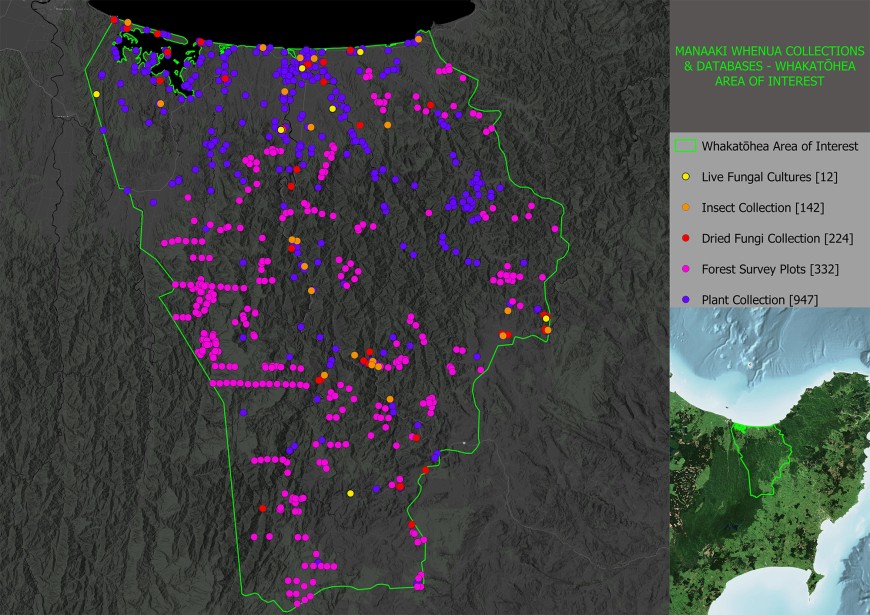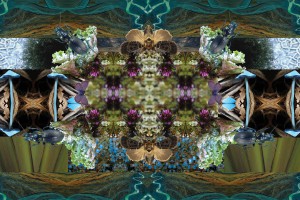A new documentary produced by Local Contexts E Kore Au E Ngaro, explores Manaaki Whenua’s work with Whakatōhea, an iwi in the eastern Bay of Plenty, to apply biocultural labels to some of these specimen samples through our Systematics Collections Data (SCD) website. Local Contexts is a global initiative that supports indigenous communities with tools such as Biocultural Labels and Notices to reassert cultural authority in heritage collections and data.
For Whakatōhea Māori Trust Board Council Member Local Contexts Council Member and Strategic Advisor Māui Hudson (Whakatōhea, Te Korowai Ngāruahine, and Te Māhurehure), this work is about how his community can reassert cultural authority.
“There’s some plants that are unique to our rohe (territory), critically endangered like the scrub daphne – and that’s something that we’ve found out is part of the collection at Manaaki Whenua,” says Maui.
“Because indigenous knowledge has developed over a long period of time, it’s not subject to the kinds of intellectual property (IP) protections that are in place. Within research domains you end up with this situation where the copyright is claimed by the researcher or the institution and so our traditional knowledge then becomes subject to someone else’s IP rights.”
Maui explains that the Biocultural Labels now applied across thousands of Manaaki Whenua samples are digital tags that reflect indigenous interests in scientific data.
“Now there are several things that we’re trying to express through the biocultural labels. First and foremost is provenance: that the connection back to the community should be maintained and retained across records. The other things that are being reflected are what kind of protocols are being put in place, and whether consent is being associated with the material as well.”
He continues, “And then the third component relates to the permissions and the sorts of activities that the community is comfortable with in terms of outreach activities, research use and giving an indication about what sort of relationship they’re happy to engage with researchers going forward.”
Manaaki Whenua General Manager Te Tiriti Strategy Holden Hohaia (Ngāti Maru) says this work is about recognising indigenous rights and interests in the specimens (and related data) that we hold in our collections.
“For much of Aotearoa’s post-colonial history the scientific endeavour of collecting specimens and data has been carried out usually with little recognition of Māori rights or interests in what was collected. In effect we have tended to collect without first seeking permission from local iwi/hapū interests.”

Onscreen map of the Whakatōhea rohe showing where specimens have been collected.
The labels seek to address this imbalance by putting the research community on notice that these specimens have a provenance, explains Holden. They also serve as a reminder that iwi/hapū may wish to have some say over, or involvement in, how that material and data are used in the future.
“They offer an ethical framework for us to recognise indigenous rights and interests in indigenous data without needing a comprehensive legal framework– which may be a long way off yet,” he says.
Manaaki Whenua Herbarium database manager Dr Aaron Wilton who has managed the project says about 60 to 70% of the collections data are georeferenced. “This means we can pin down, based on a coordinate, to a particular rohe such as Whakatōhea,” says Aaron.
“There is significant work that happens under the hood to support how we deliver information out for use – the labels are critical as a tool as we start that journey – just to raise awareness among the scientists but also as a signal to iwi and hapū that we want to collaborate.”
Next steps in enriching data
Dr Alexander Amies, a data scientist at Manaaki Whenua, has been supervising Jason Tang from Lincoln University’s Masters of Applied Computing programme to develop an app to give collectors the information required to determine the value/suitability of collecting a specimen.
“It’s important cultural considerations are recognised when collecting in the queried location, and where known, biocultural labels for existing records, says Alexander.
“These are key for researchers to apply proper tikanga when collecting and using specimen information, particularly when looking at specimen lists in aggregate. This is also a great opportunity to add a wider perspective to data stored in Manaaki Whenua’s collections to enrich data in ways that haven’t been previously explored.”

